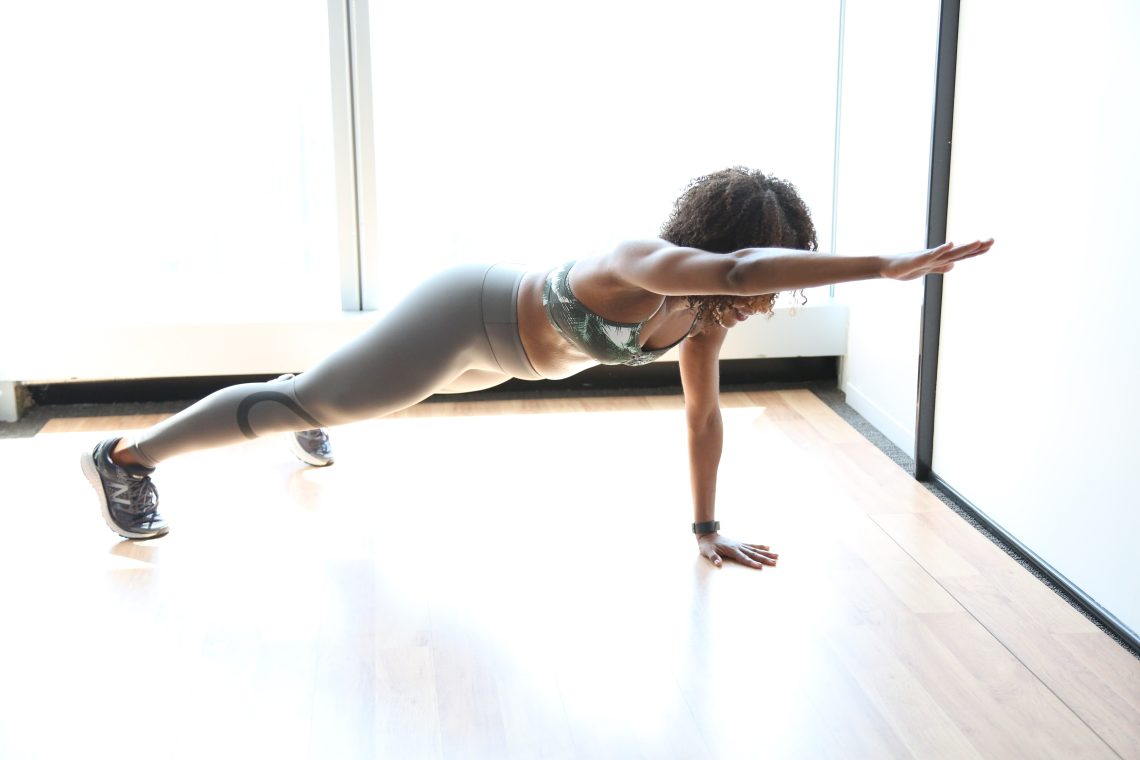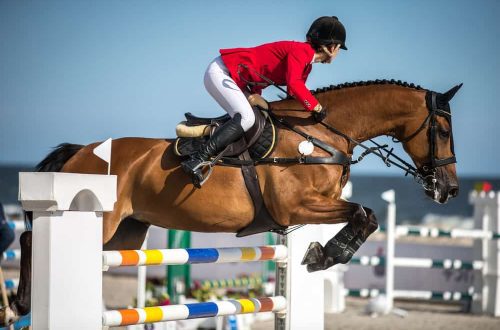
Work on yourself: improve balance and achieve relaxation
Work on yourself: improve balance and achieve relaxation
As riders, we must strive to do everything to interfere with the horse as little as possible, to make it easier for him to work on achieving the correct movements and completing any tasks assigned. We want to “communicate” with the horse in a language he understands and maintain a balanced posture. We need flexibility and relaxation.
In this article, I want to talk about some of the factors that affect our ability to acquire and maintain a balanced and independent posture, as well as offer you some exercises that can help us.
There is a position of the body – a position – which we call “sports”: the body is even, the knees are slightly bent, the feet are shoulder-width apart. This is one of the most stable positions – it makes the athlete ready to perform a movement in any direction at any time.
I suggest that we consider our saddle position along similar lines, as they emphasize the idea of independence and readiness for action while also being free of tension. This is what we basically want from our horse too – attention and connection with calmness and focus. I call it responsive relaxation.
But what do we see in practice? Often a tightness created by over-focusing or trying too hard to maintain a certain position. This leads either to involuntary muscle contractions when using the controls or, on the contrary, to looseness or even stoop and instability of the middle part of the body.
Physical stress
Unblocking physical tension before riding can be very helpful.
Our life throws us various problems associated with muscle stiffness. Some are not used, some are stimulated incorrectly. The tightness that comes from lack of use and the stiffness from improper muscle work “fetters” your body and joints, irritates your tendons and muscles. The result is a negative impact on your posture.
Maintaining correct posture despite stiffness requires the use of strength: you turn on the muscles, actively counteracting the stiffness created by tightness in them. For the rider, effort implies tension. Any tight spots in the muscles form a pinched area that is less sensitive to signals.
I recommend that all riders do a stretch before riding to physically release tight muscles and ligaments. So you can maintain your posture without making any effort. Not only do the soft muscles transfer relaxation from you to your horse, but you also become much more sensitive to the work of your horse’s muscles underneath you. This feeling contributes to the ability to use the controls more subtly, improves partnership, makes the ride safer.
Another benefit of pre-stretching is that it gives you the opportunity to take the negativity out of your day or your last riding session and refocus. Tight muscles cannot carry loads as well as properly stretched ones. Stretching will help reduce the risk of injury, muscle rupture during an accidental sudden load.
Mental stress
It is almost impossible to relax the body if you are mentally tense to some extent. You need to convey calmness and peace to your horse, but when you are mentally stressed, you convey to him – “run away.”
For fun, try while walking, when you are relaxed, suddenly imagine that a ferocious bear came out from behind you from behind the trees, and look at the reaction of the horse, at his ears, pay attention to the muscles of his back. Depending on the psychotype, she can simply unfold her ears and wonder what made you so excited; or he may raise his head and widen his nostrils.
Try another test: at the beginning of the ride, breathe deeply, exhale calmly, and see what your horse will do.
Sports psychologists work with athletes to develop pre-performance rituals to help them use their natural physiological and psychological responses to tournament stress to focus constructively. Exercises such as visualization and associating specific actions with relaxation help in this process. Using breathing techniques or visualizing your ride will help you keep your posture neutral and your body responsive yet relaxed. You are relaxed because you already know what you will do. You are in control.
Tone and endurance
No tension is only one side of the equation. You also need good muscle tone to achieve an independent fit, otherwise you will look like a rag doll. Looseness leads to inefficient and inaccurate use of controls. I often see riders frustrated that the horse is not listening to the applied foot, when in fact their own position is telling the horse to move in the opposite direction or do something other than what the foot “tells” it to do.
Muscular strength and endurance are very important components of your ability to use your body throughout the ride. The cardiovascular system is another factor. It controls the distribution of oxygen in the muscles and brain, and therefore your endurance and accuracy.
Modeling and muscle independence
A strong and flexible rider, in good physical condition, with a perfectly functioning cardiovascular system, able to maintain psychological focus, can still block the formation of a relaxed connection in the horse’s back through involuntary tension in the seat and legs. It is important to remain neutral in the saddle, no matter what the other part of your body is doing. An example would be turning your torso over your waist, which does not move your seat or pinch your horse’s body with your legs. Another example is keeping your balance in your stirrups while doing triathlon – your torso can lean and lean depending on the situation. Note that it can often be seen that if the rider is asked to turn his shoulders, his hips, legs and buttocks will follow.
It takes a hundred to a thousand repetitions of a new muscle movement pattern to break and replace a familiar pattern (for example, follow the legs behind the shoulders while turning the latter). This is one of the reasons why it is much easier to start training a young horse than it is to retrain an older one, or start a new sport as a child rather than later in life, when your body has already developed its own “habits” of how to move in space.
Making and repeating off-the-saddle movements can shorten your physical learning curve by making your automatic reactions more accurate in the saddle. You will have enough time to think about all the pitfalls of the ride or think about the route; you won’t have to pay attention to how your core is engaged to maintain independence of hip and shoulder movement.
Exercises
Some of the exercises that I recommend for riders to develop their ability to engage a specific muscle group while maintaining good posture and balance and neutrality in the hips and buttocks are gym ball twists and the “Pinch Your Toes” exercise.
1. Turns sitting on the ball: Sit on the ball with your weight evenly distributed on both sides of your seat. Keeping your arms at shoulder height, engage your abdominal muscles to stabilize your hips, obliques, and back, and rotate your torso and shoulders until your arms are almost perpendicular to your hips.
Pivoting while sitting on the ball will help you determine if your hips and buttocks remain in a neutral position as your torso twists or stretches from side to side.
Because the ball under you will move slightly if you move your butt, this becomes a very good lie detector. You can move your arms almost anywhere, but turning your arms to the side will make it easier for you to know where your shoulders are.
Many find themselves turning only their heads, thinking they are turning their shoulders. You may also find it easier to turn one way than the other.
Work on the tighter side longer, do more reps.
2. Standing twists: We perform this exercise in the same way as the previous one.
Standing turns can be performed with the ball between the legs.
Standing turns can also be performed with a balance board.
There are several ways you can get your hips to stay in a neutral position: hold a fitness ball between your legs, stand on the floor paying attention to where your hips are pointing, or stand on a balance board.
Your goal is to achieve shoulder rotation without simultaneously rotating your hips or shifting your weight.
3. “Don’t pinch your fingers”
This exercise is deceptive: it seems very simple, but most people start doing it wrong. It’s like a hand exercise, so the first thing you want to do is use your hands. In fact, this is a shoulder exercise.
As a rider, you want to be able to work with your shoulders without simultaneously engaging your biceps or squeezing your arms.
To help separate the work of these muscle groups and the signals for them in your mind, do this exercise by focusing on bringing your shoulder blades (and shoulders) forward and then bringing your shoulder blades together.
Keep only two fingers around the handles of the expander so that you can wiggle your other fingers. If you can wiggle your fingers, your biceps will stay soft.
Heather Sansom (source); translation by Valeria Smirnova.





